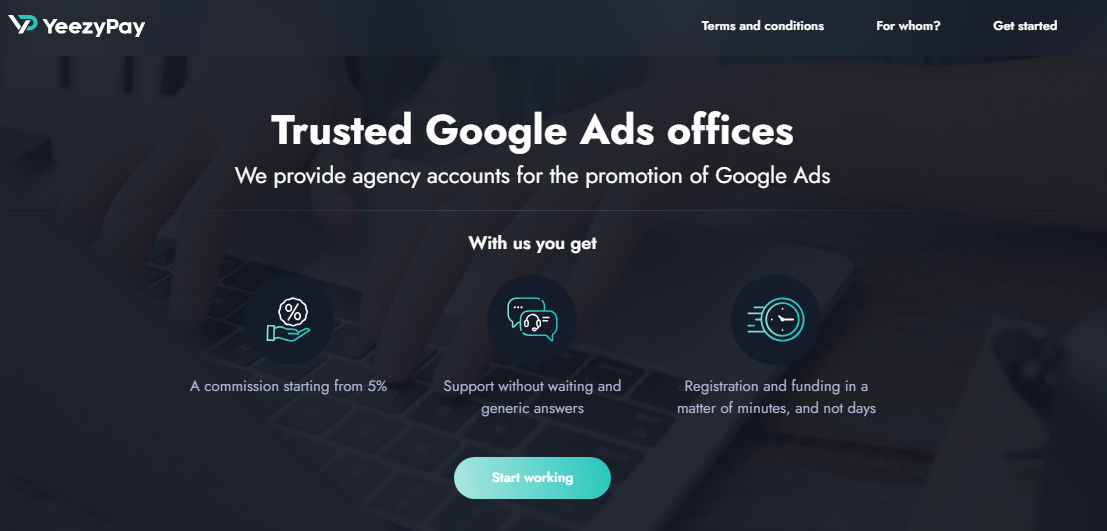Augmented reality (AR) is quickly becoming a part of our daily lives, changing how we interact with the world around us. It's not just for entertainment anymore; AR now offers incredible chances for marketers and affiliate marketers to promote their products and services. Google, one of the top tech companies, is actively developing AR tools and integrating them into its advertising platforms. In this article, the YeezyPay team, a service that provides trusted agency advertising accounts for Google Ads, will explain how effective AR advertising can be.
Google has been a pioneer in AR advertising for more than ten years. They recognized its potential early on and have continued to push the boundaries. According to Statista, the global AR advertising market is expected to generate $5.2 billion in revenue by 2024, with steady growth projected through 2028. Think Mobiles even found that around 40% of consumers are willing to pay more for a product if they can try it out using AR.
Let's look at some of the main advantages of AR in Google Ads

Users can interact with virtual objects, such as trying on clothes, arranging furniture in an interior, or testing cosmetics. This creates a sense of presence, increases engagement and trust in both the advertised offer and the brand as a whole.



But at this stage of development of Google Ads, it will not be possible to work with AR advertising in grayhat verticals, since the list of companies that provide functionality for setting it up is limited, and getting verified by them is quite problematic.
As a permanent alternative, at this time, it is still better to use a proven combination of familiar advertising formats and trusted Google Ads agency accounts.
Why affiliate marketers and media buyers should pay attention to AR advertising
In an oversaturated advertising space, where banner blindness is prevalent, capturing the attention of the target audience for a specific offer has become increasingly challenging. To combat this, traditional advertising formats are being supplemented with innovative technologies. This is where augmented reality (AR) steps in, offering advertisers a unique platform to create engaging and memorable user experiences. Just think about how popular the AR game Pokémon Go became!Google has been a pioneer in AR advertising for more than ten years. They recognized its potential early on and have continued to push the boundaries. According to Statista, the global AR advertising market is expected to generate $5.2 billion in revenue by 2024, with steady growth projected through 2028. Think Mobiles even found that around 40% of consumers are willing to pay more for a product if they can try it out using AR.
Let's look at some of the main advantages of AR in Google Ads
Interactivity and engagement
Immersive advertising enables users not only to see but also to "virtually feel" the offer.Users can interact with virtual objects, such as trying on clothes, arranging furniture in an interior, or testing cosmetics. This creates a sense of presence, increases engagement and trust in both the advertised offer and the brand as a whole.
Personalization
AR enables the creation of customized advertising campaigns tailored to individual users' interests and needs. For example, products can be recommended based on a user's personal style or interior design preferences.Improved user experience
AR makes the selection and purchasing process more convenient and enjoyable. Users can virtually try on clothes to ensure the right size and style, or see how furniture would look in their apartment before making a purchase.More conversions
Marketing research shows that using AR in advertising can significantly boost conversions. For instance, an online clothing store that implements a virtual fitting room can expect a 20-30% increase in sales.Google Tools for AR Advertising
- Google Swirl: This 3D advertising format allows users to interact with three-dimensional product models. Swirl enables users to examine the product from all angles, zoom in, rotate it, and even look inside. Detailed instructions for making Swirl creatives are provided in the Help section.
- ARCore: A platform for developing augmented reality applications. With ARCore, you can create your own AR apps to promote products and services.
- Google Lens: A visual search tool that allows users to obtain information about products simply by pointing their smartphone camera at them. Google Lens can launch AR experiences, such as virtually trying on clothes or viewing 3D product models.
Examples of using AR in advertising
To better understand AR's relevance in advertising, here are a few examples of businesses where implementing this technology will be especially relevant and effective:- Furniture Stores: Users can virtually place furniture in their apartments to visualize how it will appear in their interiors.
- Clothing Stores: Virtual fitting rooms allow customers to try on clothes without leaving the comfort of their homes.
- Mobile Games (including Real Money Games): Users can experience a trial level of a game directly within the ad itself. This approach immerses the target audience in the marketing funnel and generates interest in the offer.
- Real estate: Augmented reality in advertising enables users to virtually visit specific locations and premises.
- Cosmetic brands: AR filters enable users to "try on" makeup and visualize how it will look on their faces.
- Automotive companies: Users can explore cars from every angle, open doors, examine interiors, and even take a virtual ride.
How to start using AR in advertising
If you want to start using augmented reality in your ads, here are the main steps to follow:- Define your goals: Before diving into AR advertising, it's crucial to determine what outcomes you want to achieve. This could include boosting brand awareness, engaging users more effectively, or driving increased sales. To work with AR advertising, you'll need to prepare a Google Ads agency account in advance. Unfortunately, you can't set up this account on your own due to platform rules. You'll need to meet certain requirements, provide documents and statistics on advertising effectiveness to obtain an agency account from Google. This can be particularly challenging for solo affiliate marketers or small to medium marketing teams, as Google regularly imposes new requirements. An alternative solution is to use agency accounts from partner companies and work with more traditional formats, such as display and search. Services like YeezyPay provide access to agency advertising accounts at great terms.
- Choose the right tool: Google provides various tools for creating AR ads. It's important for affiliates or advertisers to select the tool that best aligns with their goals and available budget.
- Create high-quality content: Your AR advertising should be captivating and appealing to users. Focus on producing top-notch 3D models, animation, and sound to deliver an engaging experience.
- Test and optimize: Once you've launched your AR campaign, it's essential to monitor its performance and make necessary adjustments to achieve better results.
The future of AR advertising
AR technology is constantly advancing, and we can anticipate even more immersive and interactive ad formats in the near future. Here are some developments to watch out for:- Integration with advertising platforms and social networks: AR advertising will increasingly appear on social networks, enabling users to share their experiences with friends and followers.
- Using artificial intelligence (AI): AI will play a role in personalizing AR advertising and creating even more realistic experiences for users.
- Advancements in AR glasses and devices: The emergence of affordable AR glasses and other devices will further popularize augmented reality, opening up new possibilities for advertising.
Conclusion
AR advertising is a powerful tool for affiliate marketers and advertisers to achieve their campaign objectives.But at this stage of development of Google Ads, it will not be possible to work with AR advertising in grayhat verticals, since the list of companies that provide functionality for setting it up is limited, and getting verified by them is quite problematic.
As a permanent alternative, at this time, it is still better to use a proven combination of familiar advertising formats and trusted Google Ads agency accounts.


